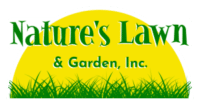How to Start Seeds Indoors
This time of year, starting seeds indoors can be a fun family activity to help us escape the late-winter doldrums. It can also give bored kiddos (and adults!) an enriching project. But there are several practical reasons for starting seeds indoors:
- In many regions there are not enough growing days for some plants to get to harvest if they’re started outside; starting seeds indoors will give a few extra weeks of growing time, which can really make a difference.
- Tender vegetables like tomatoes, eggplants, and peppers are very susceptible to the cold temperatures of spring, so it’s best to start them indoors and keep them safe from unpredictable weather.
- When you plant your own seeds, you tend to have healthier plants since you can give them extra care from day one. To improve germination rates, consider using our Super Humic Acid from the start.
When to Start Seeds
Before you get started, it’s important that you know the last frost date for your area. When choosing your seeds, be sure to review the seed packets or catalog for guidance on when to start seeds indoors. Typically, they will say how many weeks ahead of your last frost date you should sow a certain type of seed. The date will be different depending on where you live, but the frost date is your benchmark.
What Supplies Do I Need to Start Seeds Inside?
Plants require the same basic elements to grow indoors: Light, heat, and water. Finding a warm, sunny spot indoors (about 70 degrees or above and at least 8 hours of sunlight a day) is ideal, but most likely you’ll need some supplies to supplement these necessities. Gather these items before you begin planting indoors:
Seeds
Starting seeds indoors gives you the opportunity to try out all kinds of fun varieties. Remember, germination rates may be impacted with out of date seed packets, so be sure to use fresh, high quality seeds that provide detailed instructions on the packet. We prefer heirloom and/or organic seeds for the best results.
Seed-Starting Soil Mix
Be sure to use a seed-starting mix that is lighter than regular garden soil. This allows germinated seeds to easily send out new roots. It also drains well, so seeds and tender roots won’t rot.
Seed Trays and Tray Covers
Trays will catch water and keep your surfaces clean and dry. You can buy ready-made trays for seed starting that come with a plastic tray cover that mimics the warm, humid conditions of a greenhouse. Or, you can just use a sheet pan or baking dish to serve the same purpose.
Grow Lights
Grow lights are very helpful for indoor seed starting if you don’t have adequate natural sunlight. Seeds need a lot of bright light to germinate and grow into seedlings. Look for energy-efficient LED grow lights or fluorescent grow bulbs.
Heat Mat
Try placing seed trays on warm surfaces in your home, such as on top of a refrigerator. A heat mat is very helpful for starting summer plants like tomatoes, peppers and eggplant. A heat mat raises soil temperature from below, aiding in germination rates and warming roots as seedlings grow. Most seeds need temperatures from 65 to 70 degrees to germinate.
How to Start Seeds Indoors
- Start by dampening the seed starting mix with a little water and then gently mix it up for equal moisture throughout. The mix should be moist, but not sopping wet.
- Fill trays about 3/4 full with seed starting mix.
- Plant seeds according to packet instructions. For best results, plant a few seeds per pot – you can always thin them out later.
- Water evenly from above.
- Cover trays to hold in heat and humidity. Use plastic wrap if you don’t have tray covers.
- Set trays on a plant heat mat or in a warm spot. At this stage, you do not need a strong light source because seeds don’t need light to germinate, but they do need warmth.
How to Care for Young Seedlings
- Check trays regularly to spot when seeds germinate. You’ll notice a small sprout that will start developing into a small plant.
- When you see sprouts, remove the tray cover/plastic wrap to allow airflow.
- Make sure plants get plenty of light from this point on. Newly germinated and growing seedlings can require 12 to 18 hours of light daily. If you don’t have adequate sunlight, keep seedlings under grow lights until you’re ready to move them outdoors. Be sure to change the position of the lights as the seedlings grow. If lights are too close to the plants, they will dry out the soil more quickly and the plants could burn.
- Throughout the process, keep soil evenly moist and do not let it dry out. Watering from below is a good idea in the early stages. Add water into your tray, and the seed pots will soak up moisture slowly and evenly from the tray.
- At the start of the seedlings stage, you can begin fertilizing with our organic balanced liquid fertilizer, Plant Food Hero.
- If you use heat mats for germination, you may need to turn them off after seedlings begin to grow. Too much heat can cause soil to dry out quickly. However, if your indoor space is cool, the mats may be helpful.
How to Prepare Seedlings for Transplanting
Be sure to “harden off” your transplants – expose them to slightly cooler and dryer conditions before putting them out into your garden. If you set them right out into your garden, they may suffer shock from the sudden changes.
Additionally, running a fan to blow light air over your transplants will strengthen their stems and stalks and prevent them from snapping with the first strong wind.
Make sure to thoroughly water your plants before removing them from their original container.
What Plants Should I Start Indoors?
Broccoli
Celery
Collards
Cosmos
Eggplant
Impatiens
Kale
Kohlrabi
Leeks
Marigold
Onion
Pansies
Peppers
Petunias
Scallions
Snapdragon
Tomatoes
Zinnia
Have fun, and get planting!




